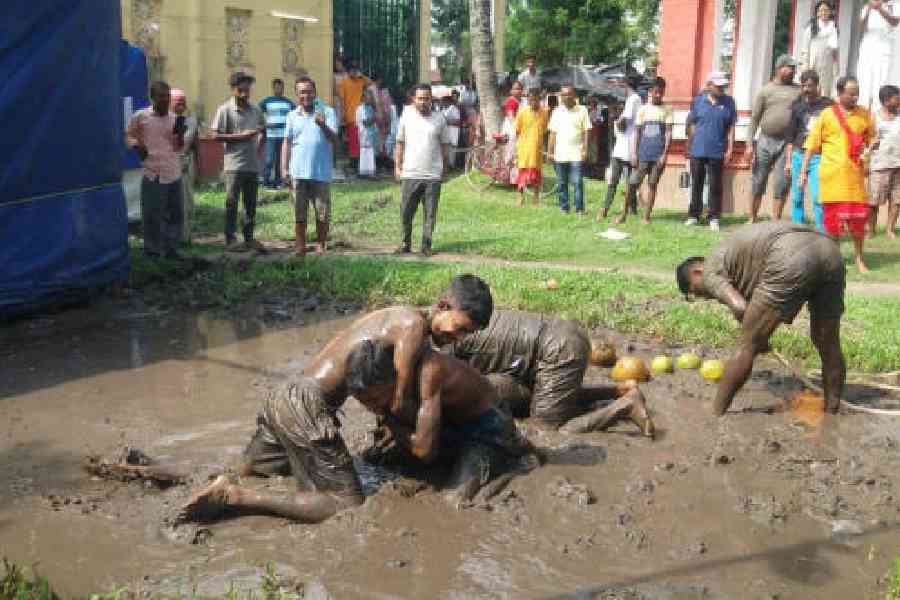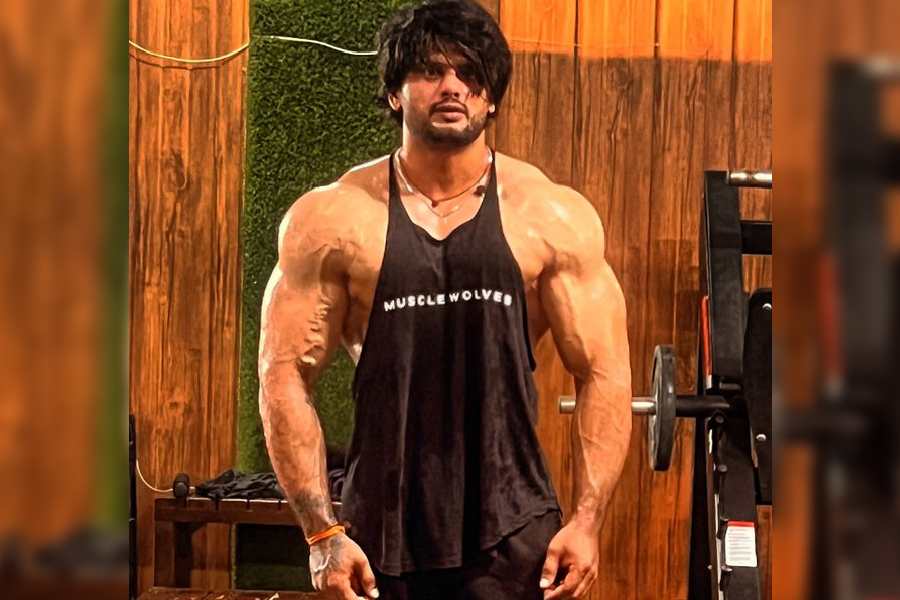Two age-old religious rituals of the Baikunthapur Rajbari in Jalpaiguri, both over five centuries old, began on Sunday, marking the start of preparations for the palace’s famed Durga Puja and the worship of goddess Manasa, which is older.
This year, the Durga Puja of the royal palace is celebrating its 515th anniversary.
According to tradition, the structure of the Durga idol is worshipped the day after
Janmashtami.
“Every year, after immersion, the main structure of the idol is retrieved from water and kept in the palace mandap for worship. A day after Janmashtami, devotees participate in Nandotsav or Kado Khela, a mud play where people smear mud on each other. The mud collected from this ritual is later used to craft the idol of the goddess,” said Shibu Ghoshal, the priest of the royal palace.
This year too, the rituals began with Nandotsav. Historically, the festivities included human sacrifices, but the practice has long been replaced by symbolic offerings of human-shaped figures made of rice and bananas.
A source from the royal family explained the origins: “Around 500 years ago, Shishya Singh, founder of the Raj dynasty, had gone for a hunt and then he felt the need for a human sacrifice to worship goddess Durga. He sacrificed his companion.”
Since then, the Durga idol at Baikunthapur Rajbari has retained its distinct deep-red complexion, symbolising blood.
During the Durja Puja, thousands of devotees from Jalpaiguri and nearby areas throng the Rajbari to witness the rituals. Women celebrate with the traditional sindoor khela (smearing each other with vermilion) before the immersion of the idol, which takes places in the palace pond.
Pranata Basu, a member of the royal family, said the immersion takes place in the morning with age-old practices intact. “Items from the dynasty’s past, such as the royal scepter (staff), are still used during rituals. Gunshots are fired ceremonially during immersion to mark the conclusion of the Puja,” she said.
Alongside, the traditional Manasa Puja of the Rajbari, said to be even older than the Durga Puja, also began on Sunday. “The Durga Puja of Baikunthapur Rajbari has continued for 515 years, but the Manasa Puja is even older,” said royal family member Leena Basu.
The rituals were conducted with utmost sanctity. Offerings of lamb meat, hilsa and other delicacies were offered to goddess Manasa on Sunday.











